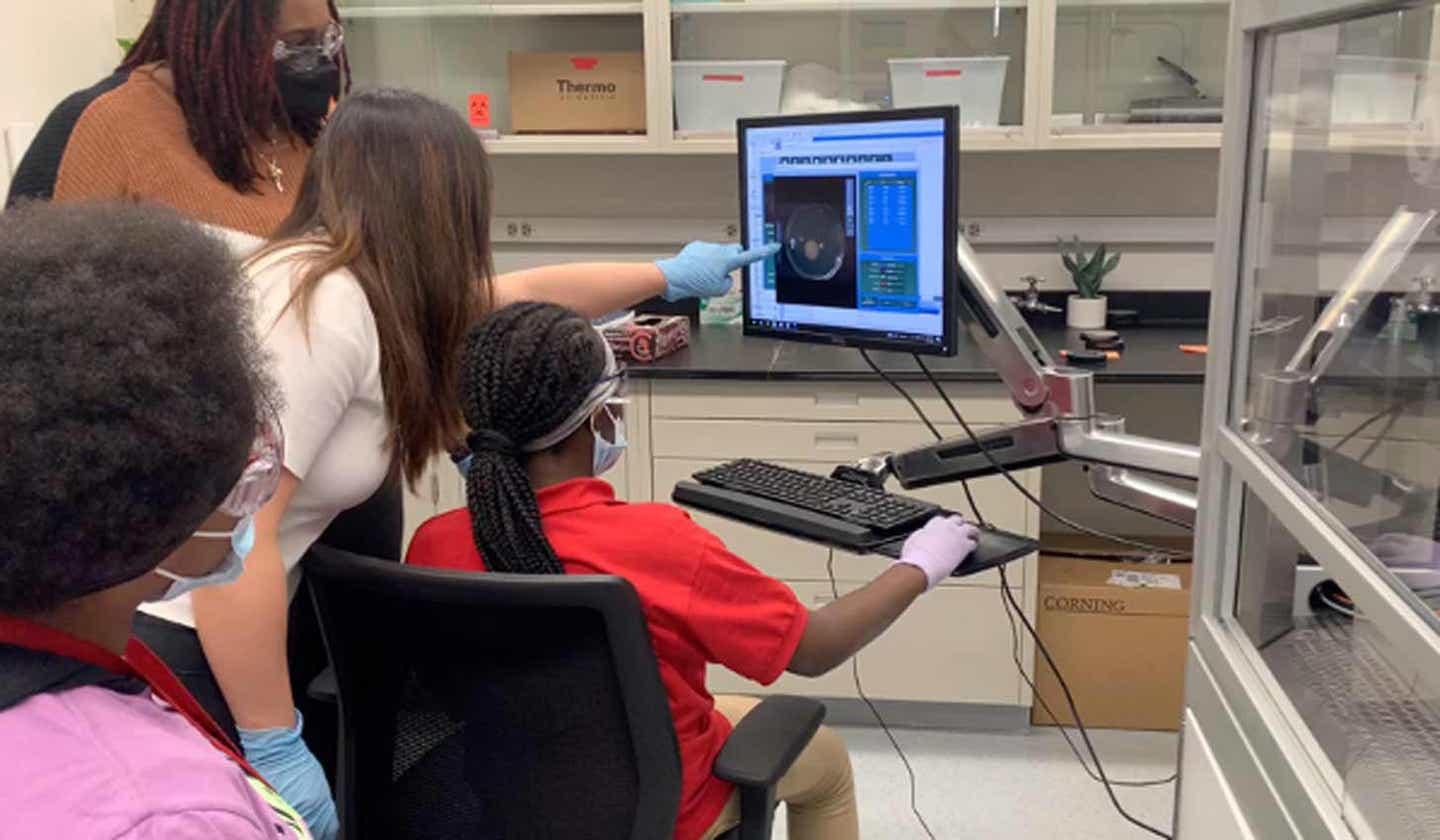Middle school students discover cancer-fighting compound in goose droppings
Chicago middle schoolers find a cancer-fighting compound during a STEM program, showcasing the power of hands-on learning and research partnerships.

Middle school students in Chicago discovered a compound that inhibits melanoma and ovarian cancer growth. (CREDIT: Chicago Antibiotic Discovery Lab)
A Chicago-based science initiative recently turned middle school students into bona fide biomedical scientists, blending hands-on learning with groundbreaking research.
These students uncovered a novel compound with the potential to slow melanoma and ovarian cancer growth, demonstrating the transformative power of STEM education when paired with real-world research.
The discovery emerged from a 14-week program at the University of Illinois at Chicago (UIC), designed to address educational inequities in STEM fields. Led by researcher Brian Murphy and his team, the program partnered with the Boys and Girls Clubs of Chicago to immerse students in antibiotic discovery research.
Through this collaboration, young learners collected and analyzed environmental samples from their neighborhoods, exploring science as active contributors rather than passive learners.
Hands-On Science with Local Roots
The program’s unique structure placed students at the center of high-level research. Participants conducted fieldwork, applied science experiments, and environmental studies, guided by graduate and postdoctoral mentors. Using UIC's cutting-edge robotic tools, the students safely grew bacterial cultures and tested for bioactive compounds.
One of the samples, collected from goose droppings at Garfield Park Lagoon, yielded a breakthrough. The bacteria, identified as Pseudomonas idahoensis, displayed antibiotic activity. Advanced analyses using nuclear magnetic resonance and mass spectrometry revealed it produced a previously unknown molecule named orfamide N.
Orfamide N, while not responsible for the antibiotic properties initially detected, exhibited promising anti-cancer potential. In laboratory tests, it inhibited the growth of human melanoma and ovarian cancer cells, providing a basis for future pharmacological investigations.
Related Stories
Murphy emphasized the dual purpose of the program: sparking students’ interest in STEM while advancing biomedical research. "This collaboration shows that educational outreach and cutting-edge science can thrive together," he noted.
A Pathway to STEM Careers
One of the program’s core strengths lies in its mentorship model. Students worked closely with UIC researchers to make decisions and interpret findings, fostering a sense of ownership. This approach linked everyday observations—like goose droppings in a park—with high-end scientific exploration.
The students’ participation extended beyond data collection. They programmed a robot to isolate bacterial colonies, performed bioassays to test for antibiotic activity, and helped analyze the results. Their findings contributed to the identification of Pseudomonas idahoensis and its novel compound, orfamide N.
The experience left a lasting impression on the students. Many reported feeling inspired to pursue STEM careers, an outcome the program leaders view as equally significant as the scientific discoveries.
Antibiotic resistance remains a growing global crisis, with new antibiotic discoveries declining sharply since the 1950s. Programs like this not only seek to uncover new bioactive compounds but also instill in students a deeper appreciation for the scientific process.
In the case of orfamide N, its cancer-inhibiting properties offer a glimpse of its potential. While much more research is needed to fully understand its capabilities, this compound adds to the growing list of natural products with possible medical applications.
A Model for the Future
The success of UIC’s program underscores the value of combining education and research. By involving students in all stages of discovery, the initiative bridges the gap between academic institutions and their local communities.
This model of outreach has implications beyond Chicago. Similar programs could help underserved communities worldwide gain access to high-quality STEM education, fostering diversity in science while addressing pressing global health challenges.
As the researchers noted, this work highlights how unconventional partnerships—like those between universities and middle school students—can yield remarkable results. The discovery of orfamide N not only advances science but also inspires a new generation of curious minds to envision themselves as future scientists.
This study was published in the journal ACS Omega.
Note: Materials provided above by The Brighter Side of News. Content may be edited for style and length.
Like these kind of feel good stories? Get The Brighter Side of News' newsletter.
Rebecca Shavit
Science & Technology Journalist | Innovation Storyteller
Based in Los Angeles, Rebecca Shavit is a dedicated science and technology journalist who writes for The Brighter Side of News, an online publication committed to highlighting positive and transformative stories from around the world. With a passion for uncovering groundbreaking discoveries and innovations, she brings to light the scientific advancements shaping a better future. Her reporting spans a wide range of topics, from cutting-edge medical breakthroughs and artificial intelligence to green technology and space exploration. With a keen ability to translate complex concepts into engaging and accessible stories, she makes science and innovation relatable to a broad audience.



